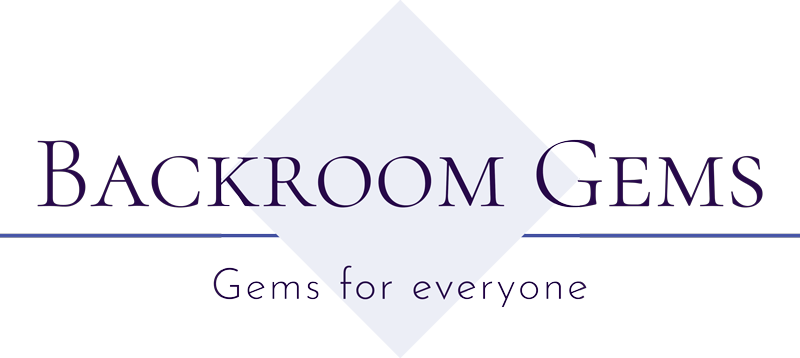Fiery October Birthstones
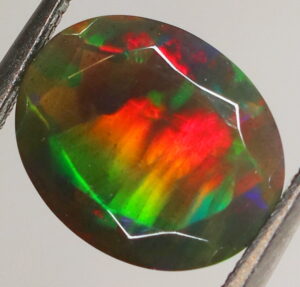 Those born in October not only get to enjoy sweater weather and all things spooky for their parties, but they also get to enjoy having some of the most unique birthstones as gifts! Opal and tourmaline both are known for their endless displays and combinations of color and stunning characteristics. While the traditional October birthstone is opal, many have adopted the modern option as their favorite for the color, qualities, and even the durability for everyday wear.
Those born in October not only get to enjoy sweater weather and all things spooky for their parties, but they also get to enjoy having some of the most unique birthstones as gifts! Opal and tourmaline both are known for their endless displays and combinations of color and stunning characteristics. While the traditional October birthstone is opal, many have adopted the modern option as their favorite for the color, qualities, and even the durability for everyday wear.
 Opals are a unique gem that have no substitute that is equal in color, flashing, or style. You can find them in a variety of hues, and from there you can find one with the perfect color/type of flashing for you! Their name is thought to have originated in India, where in Sanskrit they were called “upala” meaning a “precious stone,” and then “opalus” in ancient Rome, where they believed opals to be the most precious and powerful gemstone of all. In the Middle Ages opals were thought to provide great luck since it was thought to possess all the virtues of each gemstone whose color was represented within the gem. It was also said to grant the power of invisibility if wrapped in a fresh bay leaf and held in the hand. Because of this, the opal was seen as the patron gemstone for thieves. Bedouin tribes once believed that opal held lightning and fell from the sky during thunderstorms, while
Opals are a unique gem that have no substitute that is equal in color, flashing, or style. You can find them in a variety of hues, and from there you can find one with the perfect color/type of flashing for you! Their name is thought to have originated in India, where in Sanskrit they were called “upala” meaning a “precious stone,” and then “opalus” in ancient Rome, where they believed opals to be the most precious and powerful gemstone of all. In the Middle Ages opals were thought to provide great luck since it was thought to possess all the virtues of each gemstone whose color was represented within the gem. It was also said to grant the power of invisibility if wrapped in a fresh bay leaf and held in the hand. Because of this, the opal was seen as the patron gemstone for thieves. Bedouin tribes once believed that opal held lightning and fell from the sky during thunderstorms, while 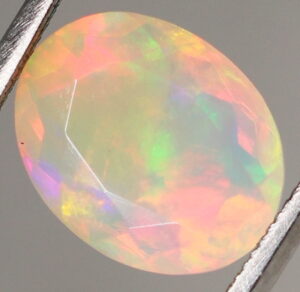 Ancient Greeks thought they bestowed the gift of prophesy and protection from disease. We can all definitely use that around this time of year!
Ancient Greeks thought they bestowed the gift of prophesy and protection from disease. We can all definitely use that around this time of year!
The internal structure causes light diffraction, which results in the color play, and depending on the conditions in the formation process, the gem may be a combination of translucent, opaque, and take form in nearly and hue! Because of this wide variety, opals are generally placed in one of these five categories that describe their appearance: White or light, black, fire, boulder, or crystal/water. The dramatic “play-of-color” phenomenon that opals are most valued for has inspired writers to compare them to fireworks, galaxies, and even volcanoes for the fire and boulder opals. In the spirit of fireworks, it has been said that opals are a perfect representation of the spark and fire of your relationship, and that the red flashing within the opal symbolizes love and passion between two lovers. So if your better half has an October birthday, or you’re celebrating a 14th wedding anniversary and you’re looking to get them an opal as a gift, try to find one with red flashing!
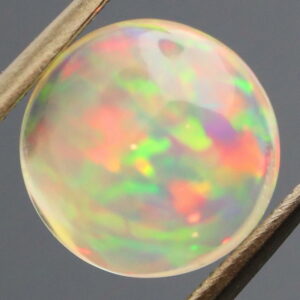 If you do decide to jump in and get them an incredible gift of some form of opal, keep in mind that they are a 5-6.5 on the Moh’s hardness scale so they can be susceptible to scratching if stored with other gem types. Diamonds, sapphires, emeralds, and even tourmalines to name only a few are on that list of harder gems that can be harmful to an opal. To keep them clean, the safest way is to simply use warm, soapy water. Other methods can be harmful and sudden temperature changes can also cause fracture. In general, they are fairly maintenance free and absolutely gorgeous gems that display an endless fiery spectacle to be loved for a very long time.
If you do decide to jump in and get them an incredible gift of some form of opal, keep in mind that they are a 5-6.5 on the Moh’s hardness scale so they can be susceptible to scratching if stored with other gem types. Diamonds, sapphires, emeralds, and even tourmalines to name only a few are on that list of harder gems that can be harmful to an opal. To keep them clean, the safest way is to simply use warm, soapy water. Other methods can be harmful and sudden temperature changes can also cause fracture. In general, they are fairly maintenance free and absolutely gorgeous gems that display an endless fiery spectacle to be loved for a very long time.
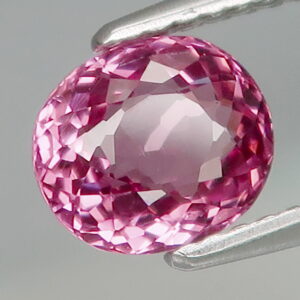 Our modern counterpart to the opal is none other than tourmaline. The name of this gem comes from the Sinhalese word “toramalli” meaning “mixed stone.” This can be taken a couple different ways since not only are tourmalines found in just about every color combination you can think of, but they have also been historically mistaken for many other gem types. For example; in the 1500s, green tourmaline was misidentified as emerald and continued to be until the 1800s, when it was tested to be a different mineral type. One of the “rubies” in the Russian crown jewels (the “Caesar’s Ruby” pendant) is actually red tourmaline, also referred to as rubellite. Yet another example of the mislabeling of our modern birthstone was of a Spanish conquistador who found green tourmaline crystals in Brazil in the 1500s and confused the stones with emerald. These and other cases of mistaken identity continued for centuries until it was tested and scientists recognized tourmaline as a distinct mineral typed in the 1800s. Chinese Empress Dowager Tzu-Hsi loved pink tourmaline so much that in the late 1800s, she bought almost the entire production from a California mine. When she passed, she was laid to rest on a pink tourmaline pillow. The remaining treasure trove of pink tourmaline was then used to make carvings.
Our modern counterpart to the opal is none other than tourmaline. The name of this gem comes from the Sinhalese word “toramalli” meaning “mixed stone.” This can be taken a couple different ways since not only are tourmalines found in just about every color combination you can think of, but they have also been historically mistaken for many other gem types. For example; in the 1500s, green tourmaline was misidentified as emerald and continued to be until the 1800s, when it was tested to be a different mineral type. One of the “rubies” in the Russian crown jewels (the “Caesar’s Ruby” pendant) is actually red tourmaline, also referred to as rubellite. Yet another example of the mislabeling of our modern birthstone was of a Spanish conquistador who found green tourmaline crystals in Brazil in the 1500s and confused the stones with emerald. These and other cases of mistaken identity continued for centuries until it was tested and scientists recognized tourmaline as a distinct mineral typed in the 1800s. Chinese Empress Dowager Tzu-Hsi loved pink tourmaline so much that in the late 1800s, she bought almost the entire production from a California mine. When she passed, she was laid to rest on a pink tourmaline pillow. The remaining treasure trove of pink tourmaline was then used to make carvings.
 Very few gemstones rival tourmaline’s dazzling assortment of colors. Perhaps this is one of the reasons ancient mystics believed it could inspire artistic expression having a palette for every mood. To achieve the wide variety of colors, boron compounds with elements like aluminum, iron, magnesium, sodium, and more. The hue most commonly found is black or green but can also range from colorless all the way to violet and occur as bi-colored or even tri-colored. Different hues of the gem are thought to have their own healing properties, with pink being the embodiment of love and is associated with compassion and gentleness. It’s no wonder why this specific hue was selected as the prime candidate for the modern birthstone!
Very few gemstones rival tourmaline’s dazzling assortment of colors. Perhaps this is one of the reasons ancient mystics believed it could inspire artistic expression having a palette for every mood. To achieve the wide variety of colors, boron compounds with elements like aluminum, iron, magnesium, sodium, and more. The hue most commonly found is black or green but can also range from colorless all the way to violet and occur as bi-colored or even tri-colored. Different hues of the gem are thought to have their own healing properties, with pink being the embodiment of love and is associated with compassion and gentleness. It’s no wonder why this specific hue was selected as the prime candidate for the modern birthstone!
Tourmaline gemstones, no matter the color, share a unique quality that makes them perfect for spooky season! You see, when they are heated or placed under pressure, they take on an electric charge that can actually pull things towards them! This phenomenon is called being pyroelectric and piezoelectric. In the everyday world, you can vigorously rub and warm up your pink tourmaline like a genie lamp and it can “magically” attract bits of paper and dust. Just like if you rub a balloon on your arm and everything wants to stick to your shirt. Then again… maybe dog hair is pyroelectric! Another spooky aspect of tourmaline gems is that they can appear to be different colors when viewed at from different angles. This is scientifically explained as pleochroism, where light is absorbed and bent in different ways as they pass through the gem. 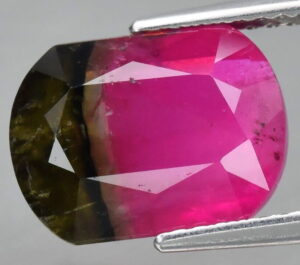 Yet another justification for them to have been considered “mystical” all those years ago.
Yet another justification for them to have been considered “mystical” all those years ago.
If tourmaline has won your heart and you wish to give your pumpkin lover either an 8th wedding anniversary gift or a birthday surprise, here are a few tips! They land at a 7-7.5/10 on the Moh’s hardness scale so they are generally suitable for everyday wear. Diamond, rubies, sapphires, and emeralds are still harder gemstones, so be aware of where the gems are being stored. To clean this birthstone, warm, soapy water and a soft brush should do the trick! They are also stable enough to withstand most chemicals, but sometimes heat can be damaging.
Both of these colorful gems are full of life and love and no matter which one you choose, remember that the love of the person giving it to you shines brighter than any gem. If you need some help shopping for opal or tourmaline, have questions, or just want to talk about your favorite spooky month, visit us at Backroomgem.com!
